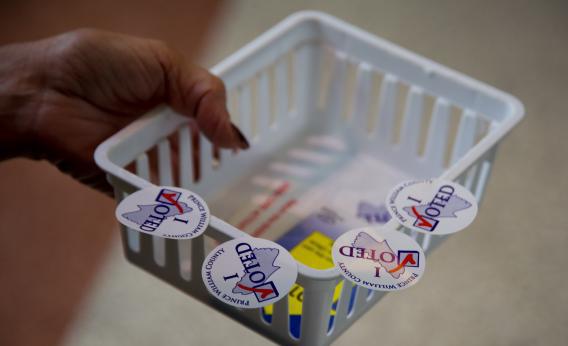When election returns start flowing into the AFL-CIO’s boiler room tonight, analysts will be looking to see where Big Labor’s preferred candidates can claim victory. But they’ll also be monitoring whether the digits in vote totals follow a natural logarithmic distribution, part of a newly-developed election-fraud detection system that AFL officials say they modeled on the math-heavy protocols that credit-card companies and the IRS use to catch cheats.
“What this is doing is looking at the numbers,” says Mike Podhorzer, the AFL’s political director. “Not whether the candidates are hitting the numbers we thought they were going to hit but looking at the numbers themselves.”
The system, designed by senior political strategist Matt Lackey, is based on Benford’s law, a mathematical principle that states that the first digits of numbers are distributed steadily in nature. In most organically produced sets of numbers, from baseball statistics to the areas of rivers, the ratio of whose (for example) first digit is 7 to those whose first digit is 4 should remain constant. A math and economics major before dropping out of Purdue in his senior year, Lackey says he has had Benford’s law on his mind since college. “It shows up in math textbooks once it gets to the point where it’s all weirdos taking those classes,” he explains. Lackey entered politics after stumbling into a job as Barack Obama’s Indiana voter-file manager during the 2008 campaign.
Lackey analyzed past election returns, and realized that the total number of votes cast per precinct adhered to the same natural progression. There were roughly three times as many precincts whose number of total votes cast started with a 2 as with a 6. Over the last couple of months, Lackey wrote code that could automatically assess the ratio of first digits appearing in the real-time election returns that the AFL receives from the Associated Press. “It became something to think about while the servers were working on other stuff,” he says.
Tonight, Lackey and his colleagues in the AFL’s analytics department will be checking on charts that should appear as a clean slope if the digits in vote totals occur in the same ratios they are expected to appear in nature. “We can detect when things are or are not natural,” says Lackey. “If you’ve got a big analytics shop, it’s not hard to get them to do one more thing, if it’s looking at a graph and saying does it look like a slalom?”
When the IRS sees numbers that don’t follow that slope, it puts up red flags calling into question whether the returns that produced them were honest. The AFL will search for places where abnormal patterns may be clustered, like those in a county or municipality where a common election authority may have tampered with the results. “You’re not going to pick up an individual voting twice,” Podhorzer says. “The thing that most election administrators don’t realize is that the returns are going to follow a natural pattern. If they’re not following a natural pattern it’s because someone changed them.”
Any abnormalities they find will feed into the AFL’s media and legal departments, who will use it to draw attention to areas where fraud may have occurred. “It doesn’t mean it’s airtight proof that there’s something the matter. It provides a warning system that before winners are decided, have a reason to look at that particular precinct or county for some kind of reason it was that way,” says Podhorzer. “It’s a burglar alarm. The fact that it was tripped doesn’t mean someone is coming in through the ductwork.”
